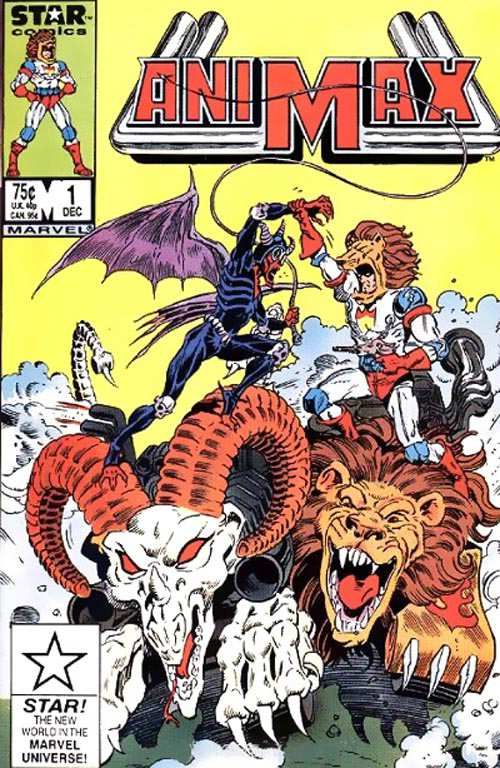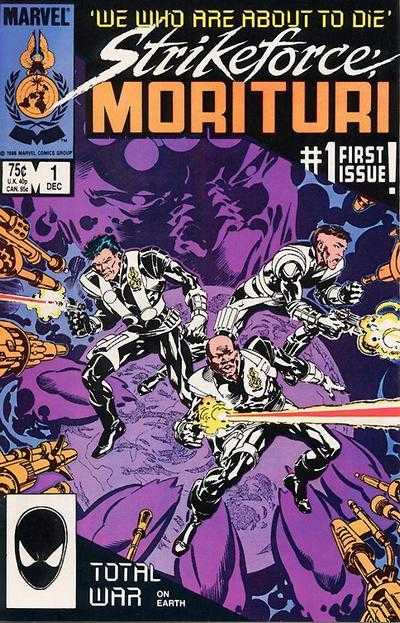
Where I was somewhat indifferent towards my brother's copy of the first issue, I think I started feeling it more with I'm uncertain when I got my hands on D.P. 7 #2. Though the book was initially told from a single character's perspective about the no-duh, too-good-to-be-true Clinic that was grooming the Displaced Paranormals for service to the C.I.A., we now get the proper ensemble that will drive this title. These characters each have their own voice and perspective, disagreements are organic, and their collaborating on a plan of action is relatable. There's no Professor X here to provide guidance, a mansion, and a stealth fighter. These are just a bunch of people from all walks of life, trying to escape a bad situation, barefoot and underdressed in backwoods and off the highway. As they're hunted by other powered beings, we see clever applications of everyone's special abilities, and Paul Ryan's relatively unglamorous art suits this more domestic take on mutant tropes. There's a reason why this was the New Universe title that lasted the longest, and managed to be one of the best regarded Mark Gruenwald series. I wrote a lot about Flint last month, so that doesn't leave much for me to say about G.I. Joe a Real American Hero #54. The cover by Mike Zeck had him parachuting while a Cobra airship came gunning fort him, and was memorably featured on one of those animated TV commercials where Marvel conspired with Hasbro to sidestep regulations by promoting the comic books, and not the toys, even though they chant "Cobra Launch Base" fifty-something times in thirty seconds. Flint is captured by the twins Zander and Xamot to be turned over to Dr. Mindbender for conditioning. Can you smell the refresh in here? There's also a lot of Serpentor, while Cobra Commander and Destro are literally buried and presumed dead under the remains of The Pit, just to make the subtext text. I wouldn't see the actual flick until home video, but I did buy the first issue of Howard the Duck: The Movie at the local 7-11. Given that they only had three issues to adapt a feature film, I'm not sure that it was wise to devote so many pages to the moody opening scenes and the "Hunger City" sequence where the band Cherry Bomb plays Howie through a series of misadventures upon his arrival in the misfit city of "Cleve-Land." What was wise was having Kyle Baker draw it, giving the very '70s Howard a fully '80s makeover. The book just looks cool, even if the story's a mess and Baker is definitely in comic strip mode. I got a commission done of Beverly to get signed by Lea Thompson, but was embarrassed when the artist sexed her up. I wish I'd given Baker's Beverly art as the reference instead of pictures, because he better balances the new wave rocker and suburban girl next door qualities of the character as depicted in the movie. Danny Fingeroth's script doesn't launder the weaknesses from the movie as effectively, and in fact he probably highlights the more off-putting aspects of the characters' personalities, which is likely why I didn't come back for the other two parts. I do think I'll keep an eye out for the last Marvel Super Special magazine that collects the lot though, if I can get it cheap. Let's be real-- if I find one, it'll be cheap. Justice #2 features more of a young Geof Isherwood's solid Adamsesque pencils undermined by Vince Colletta inks, as our protagonist kills his cellmates in a New York jail. Then he's interrogated by Rebecca Chambers. I was going to make a Cheers joke, but I myself was mixing up Diane Chambers and Rebecca Howe, when the most famous Rebecca Chambers is the S.T.A.R.S. chick from the first Resident Evil that isn't Jill Valentine. This Becky Chambers is the Black plainclothes cop that was pursuing the same drug dealers as John Tensen, the guy we mostly just call Justice. He's totally hot for Becky's pure blue aura, to the extent that he kisses her, which even in the '80s was a big no-no (while being interrogated for multiple murders, I mean.) His whole story about being a Justice-Warrior from another dimension gets a big boost when the pair are attacked by brown-skinned were-creatures that run wild on the jail. These creatures lack auras, and cannot be effected by Justice energy "sword," so he just has to straight up break their necks. But his left-hand shield square things still stop Becky's bullet, so don't ask me how this is supposed to work as anything but a pure fantasy title, surely undercutting that "world outside your window" sales pitch. Justice basically just walks out of the pokey, then brutally executes a bunch of drug dealers to get the money to pay for a cab ride to Los Angeles. I don't know what drugs Steve Englehart was on when he wrote this, but you can definitely note his distinctly oddball touch over the next several issues, now that both of the book's creators have abandoned it. Marvel Saga #13 is back for the second week of September. It's a Daredevil spotlight issue, given verisimilitude by Klaus Janson inks on the Keith Pollard cover. The earlier pages though are devoted to Hulk's first major battle with the combined Fantastic Four and Avengers, with that great Donkey Kong image of Hulk throwing girders from atop a skyscraper under construction as the heroes make their way up and through it. Black Widow gets introduced to Iron Man, triggering flashbacks to her origins with Gene Colan art and too many repurposed OHOTMU entries. Spider-Man gets Betty Brant's ne'er-do-well brother killed, and the Avengers face the Masters of Evil. It's a good issue, made better by the Daredevil section favoring Frank Miller art, though it made for a nice juxtaposition with the sunnier Bill Everett panels. After the United States' defeat in the Vietnam conflict, and the despicable reception our lost and wounded soldiers faced upon returning home, we as a nation needed to have a serious conversation about these matters in the aftermath. But instead we got Reagan and Rambo to whitewash the whole thing, with Jim Braddock returning to liberate P.O.W.s and effectively win the war we lost as late as 1989. There were a few years of introspection, and then we were right back to Team America: World Police. As a child of the '80s, I was exposed to a near constant barrage of Vietnam War material, and I wasn't really prepared to parse the legitimate consideration from the "Namsploitation." I don't recall if it was myself or my brother who bought the first issue of Marvel Comics The 'Nam, as we more or less alternated issues, and I'm also not sure where that title fell on the line I've drawn. At the most basic level, the book was conceived by Editor-In-Chief Jim Shooter, who had a mock-up put together that married the title to an image from a G.I. Joe comic, and they ended up hiring popular Joe artist Michael Golden. You have to figure Shooter wanted a Joe-like title that Marvel would own, and would tap into the popular subject of cinema at the time. On the other hand, he assigned the job of editor to G.I. Joe and actual Vietnam vet Larry Hama, who turned around and hired fellow vet Doug Murray to write it as a real-time exploration of Murray's own experiences in the war. So whatever Shooter's intentions, Hama was playing it straight, and it seemed to make a major splash, The first issue outsold Uncanny X-Men, and it was a newsstand staple for as long as Golden was on the title. The book got glowing newspaper write-ups, was swiftly collected in trade paperback, and was also repackaged as a black & white magazine. I feel like this book had to be tapping into a mainstream audience beyond the comics faithful, but when I look at circulation statements, they're nothing special. Less than 170K by around issue #15, and Golden would have drawn most of them up to that point, which had to be disappointing for someone of his fame. This first issue is stunning to look at, not only for its hyper-detailed art, but also for Golden's sublime coloring. You're immediately endeared to the characters, despite relatively sparse dialogue peppered with so much lingo that a dense glossary was included at the back of each issue to decipher it. That said, we ate it up, and for a brief period, it was among our favorite titles. Among the effects of the Mutant Massacre was my actually buying Uncanny X-Men every month with my own money, even #212 with the Rick Leonardi art. That said, it had a bloody BWS Wolverine cover, and the start of the Logan versus Sabretooth feud. I guess Storm also fought Callisto again, but when it's over sewers full of meat that used to be Morlocks, who actually cares?















